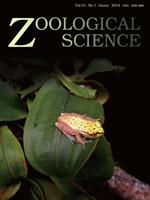Urodele amphibians can regenerate their limbs after amputation. After amputation, undifferentiated cells appear on the amputation plane and form regeneration blastema. A limb blastema recreates a complete replica of the original limb. It is well known that disturbance of the location of limb tissues prior to amputation perturbs limb patterning, suggesting that different intact limb tissues carry different location information despite their identical appearance. The cause of such differences in intact tissues remains unknown. In this study, we found that Lmx1b, Tbx2, and Tbx3 genes, which are expressed in developing limb in a region specific manner, remained detectable in a mature axolotl limb. Furthermore, those position-specific gene expression patterns were conserved in mature limbs. Treatment with retinoic acid (RA), which is known to have ventralizing activity, changed Lmx1b expression in intact dorsal skin and dorsal character to ventral, indicating that conserved Lmx1b expression was due to the dorsal character and not leaky gene expression. Furthermore, we found that such conserved gene expression was rewritable in regeneration blastemas. These results suggest that axolotl limb cells can recognize their locations and maintain limbness via conserved expression profiles of developmental genes.
How to translate text using browser tools
1 January 2014
Conservation of Position-Specific Gene Expression in Axolotl Limb Skin
Akira Satoh,
Aki Makanae
ACCESS THE FULL ARTICLE

Zoological Science
Vol. 31 • No. 1
January 2014
Vol. 31 • No. 1
January 2014
accessory limb model (ALM)
blastema
limb regeneration
Lmx1b
positional information
retinoic acid
Tbx2




